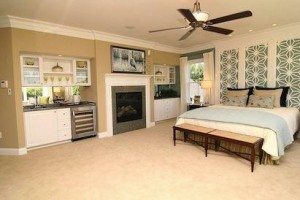 In 1965, Tony Crasi lived with his parents, brother, grandmother, great-aunt, aunt, uncle, and three cousins in a two-story house that was about 1,250 square feet. Somehow, they made it work. “Things haven’t changed,” says Crasi, owner and founder of The Crasi Co., a design/build firm in Cuyahoga Falls, Ohio. “Multi-generational households have just become more prominent now because of the economy, and because we’re living longer and aging in place.”
In 1965, Tony Crasi lived with his parents, brother, grandmother, great-aunt, aunt, uncle, and three cousins in a two-story house that was about 1,250 square feet. Somehow, they made it work. “Things haven’t changed,” says Crasi, owner and founder of The Crasi Co., a design/build firm in Cuyahoga Falls, Ohio. “Multi-generational households have just become more prominent now because of the economy, and because we’re living longer and aging in place.”
Multi-generational housing is an old concept that is making a comeback. The Pew Research Center reports that in 1900, about 57 percent of people age 65 and older lived with extended family. According to Pew, in 2009 about 6.6 million American households had at least three generations of family members, an increase of 30 percent since 2000. If multi-generational is more broadly defined to include at least two adult generations, a record 49 million people (one out of six) live in such households.
The recession is one driver of this trend; young adults, known as “boomerang kids,” are moving back home with their parents due to a job loss or inability to afford housing with the jobs they do have. Longer life spans are another driver, as are home-healthcare options that enable baby boomers to move ailing relatives into their homes instead of placing them in nursing homes. A recent wave of immigration of Asians and Hispanics is also fueling the formation of multi-generational households.
Multi-generational is not the whole housing market, but it is an important niche. As home builders struggle with a variety of economic pressures, developing a new product line is likely the last thing on their minds. But some architects and builders are getting a jump on the coming wave of household consolidation. Here are the most significant design trends in homes being built today, along with some prototype designs for future home buyers.
Source: ProfessionalBulider.com
 |
| 6183 Paseo Del Norte #100 Carlsbad, CA 92011 | DRE#01520947 |
